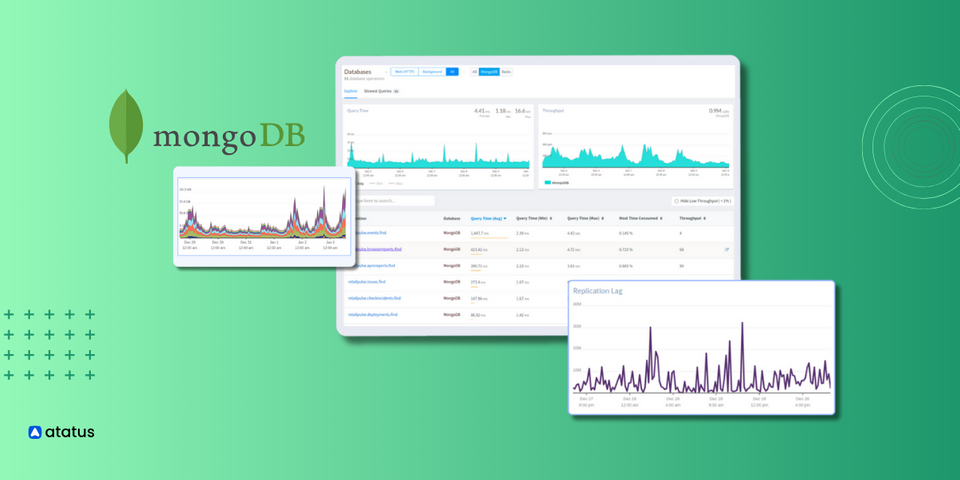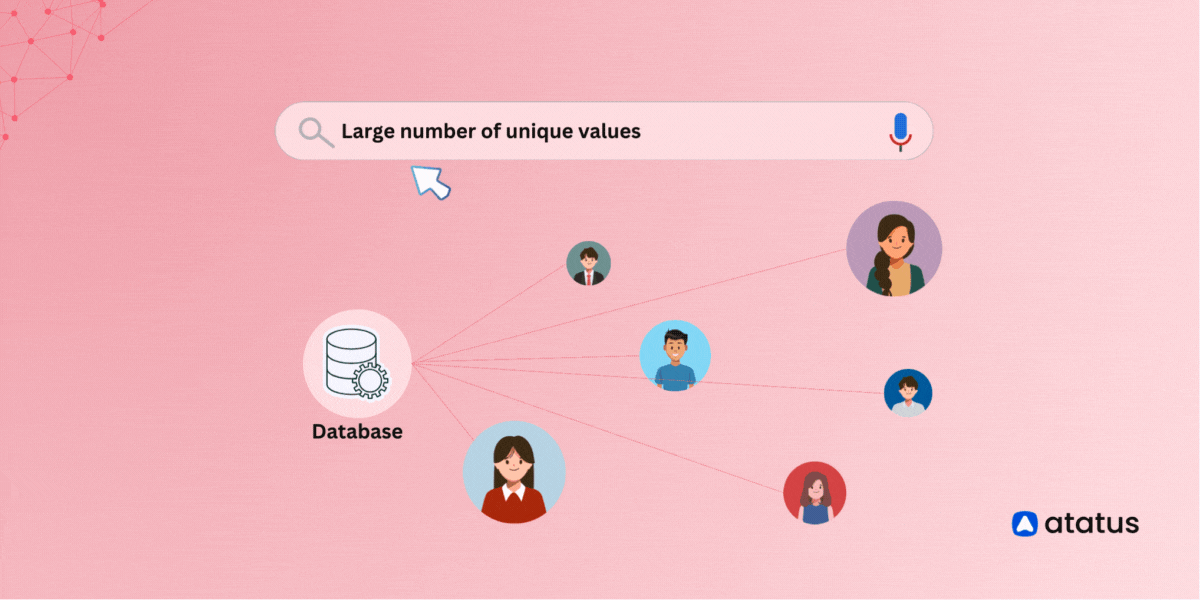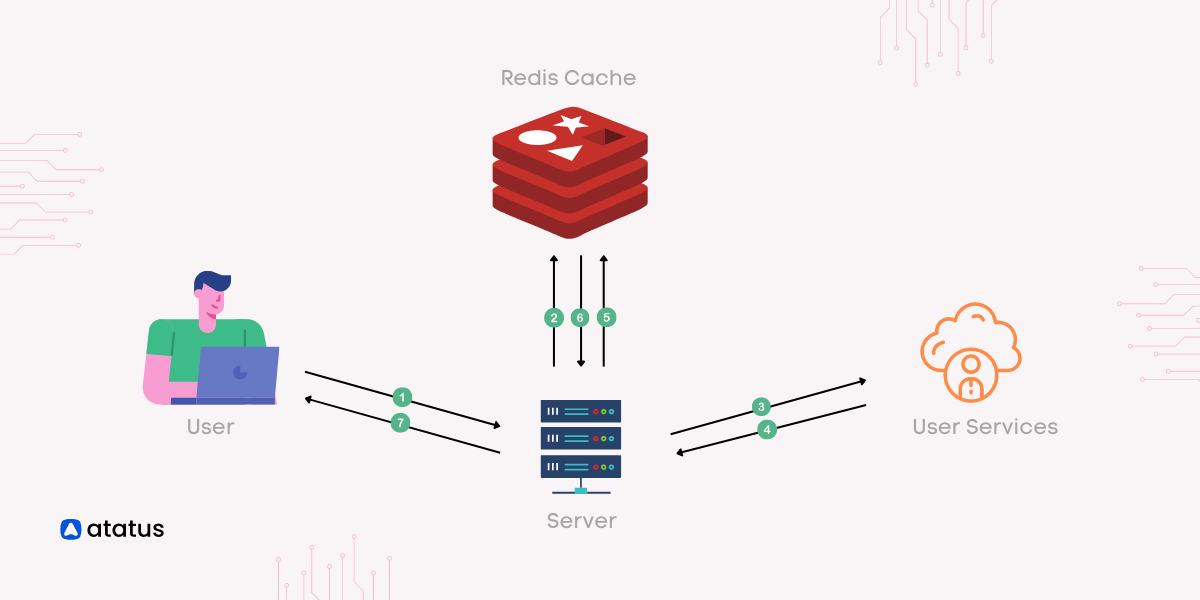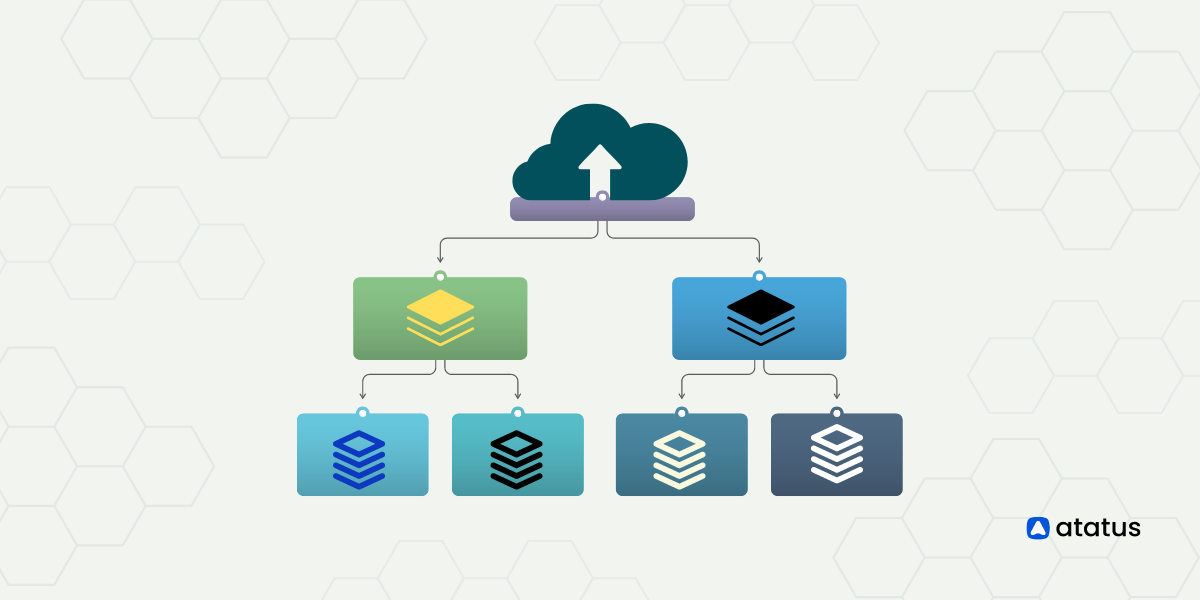What is MongoDB? Its Architecture and Monitoring
Ever wondered how popular websites manage millions of users and interactions without crashing? The answer lies in MongoDB, a NoSQL database, document-based model.
This is particularly useful for applications like social media platforms, where users can have multiple posts, comments, and interactions.
MongoDB is also highly scalable, able to handle large amounts of data and traffic by distributing the workload across multiple servers.
Additionally, MongoDB is designed for high availability, ensuring that applications can continue to operate even if one or more servers fail.
Whether you're building a small blog or a large-scale web application, MongoDB is a powerful and flexible choice for storing and managing data.
In this blog, we'll explore MongoDB, a popular NoSQL database known for handling large amounts of data and traffic. Additionally, we'll look into its architecture, including built-in comments, and how Atatus monitoring can be used to ensure seamless operation and constant availability.
Let's get started!
Table of Contents
- What is MongoDB?
- MongoDB vs. MySQL
- MongoDB Editions
- Decoding MongoDB's Architecture
- Built-in Monitoring Commands
- MongoDB Monitoring with Atatus
What is MongoDB?
MongoDB is a type of database that is really good at handling different kinds of data. It is well-suited for handling both structured and unstructured data, making it a versatile database solution.
MongoDB is called a NoSQL database because it doesn't use a strict structure like traditional databases. Instead, it stores data in a way that's similar to how we use JSON in programming.
JSON is a simple way to organize data in a text format. It uses key-value pairs, kind of like a dictionary. For example, if you wanted to store information about a person, you might use JSON like this,
{
"name": "Viraj",
"age": 30,
"city": "Mumbai"
}
In MongoDB, you can store lots of these JSON documents together in a collection. This makes it easy to organize your data and find what you need quickly.
MongoDB is popular because it works well with popular programming languages, making it easy for developers to use. Its native JSON support, dynamic schema, and powerful query language contribute to its popularity among developers.
MongoDB vs. MySQL
Comparing MongoDB and MySQL is essential for making informed decisions about database selection. Each database has unique features and capabilities that can significantly impact the performance, scalability, and functionality of an application.
| Parameters | MongoDB | MySQL |
|---|---|---|
| Data Model | NoSQL database | Relational database |
| Data Type | Ideal for applications with rapidly changing data structures or unstructured data | Ideal for applications with structured data and complex relationships between entities |
| Query language | MongoDB query language | Standard Query Language |
| Data Storage | It uses a schema-less format called JSON-like documents | It uses structured tables with fixed schemas |
| Scalability | Horizontal scaling | Horizontal scaling |
| ACID Compliance | Limited | Full |
| Licensing | Server Side Public License (SSPL) | GNU General Public License (GPL) |
| Cost | Open-source with commercial support options | Open-source with commercial support options |
| Data Integrity | Flexible | Rigid |
| Indexing | Dynamic and automatic | Manual |
By comparing these databases, developers can assess which one aligns best with their application's requirements, ensuring optimal performance and efficiency.
MongoDB Editions
MongoDB offers three main products,
- MongoDB Community Edition
- MongoDB Enterprise Advanced
- MongoDB Atlas.
Each of these offerings caters to different needs and use cases. MongoDB is available for Windows, macOS, and Linux operating systems. The MongoDB Community Edition, MongoDB Enterprise Advanced, and MongoDB Atlas can all be used on these platforms.
1. MongoDB Community Edition
Community Edition is a free, open-source version of MongoDB. It is licensed under the Server Side Public License (SSPL), which requires users to share any modifications they make to the software.
This edition is self-hosted, meaning that the user is responsible for deploying, managing, and scaling the database.
2. MongoDB Enterprise Advanced
Enterprise Advanced is a paid version of MongoDB that includes additional features and support. It is also self-hosted and offers more advanced features such as encryption, auditing, and advanced security features.
It includes support from MongoDB, which can be helpful for businesses that need assistance with their MongoDB deployments.
3. MongoDB Atlas
MongoDB Atlas is a cloud-based offering of MongoDB that is hosted and managed by MongoDB. It is a fully managed service, which means that MongoDB takes care of deploying, managing, and scaling the database for you.
It offers many of the same features as MongoDB Enterprise Advanced, such as encryption, auditing, and advanced security features.
Decoding MongoDB's Architecture
MongoDB's architecture is designed to be highly scalable and fault-tolerant. It uses a distributed system to ensure high availability and fault tolerance, with data distributed across multiple servers.

Let's break down the MongoDB architecture into its key components and their specific uses.
Application
This is the software or program that interacts with the MongoDB database. The application sends queries to the database, and receives and processes the results.
The application can be any type of software, such as a web application, mobile app, or desktop application.
Driver
The driver is a software library that allows the application to interact with the MongoDB database.
The driver provides an interface for the application to send queries to the database, and receive and process the results. The driver can be written in any programming language, such as Java, Python, or C#.
Router
The router is a component of the MongoDB architecture that manages the distribution of data across multiple servers. The router receives queries from the application, and routes them to the appropriate server or servers.
The router also manages the replication of data between servers, and ensures that data is consistent and up-to-date across the entire database system.
Sharding
Sharding is a method used to distribute data across multiple servers. Each subset of data stored on a separate server is called a shard. A shard server is a server that stores one or more shards.
The mongos process acts as a router, directing read and write operations to the appropriate shard server based on the shard key.
Replica Set
A replica set is a group of processes that maintain the same data set. Each replica set includes a primary node and one or more secondary nodes.
The primary node is responsible for handling all write operations, while the secondary nodes replicate the data from the primary node. If the primary node fails, one of the secondary nodes is automatically elected as the new primary node.
Config Server
The config server is a special type of mongod process that stores metadata about the cluster's configuration. It is used by the mongos process to route read and write operations to the appropriate shard servers.
Built-in monitoring commands
MongoDB provides several built-in monitoring commands that can be used to gather information about the server, database, and collections.
- To view all databases in MongoDB.
show dbs
When you run this command, you will see a list of all databases currently available on the MongoDB server, along with their sizes.
- To create a new database in MongoDB, you don't need to explicitly create it. MongoDB creates a database when you first store data into that database.
use <database_name>
- To view the current database in the MongoDB shell. When you run this command, you will see the name of the current database you are connected to.
db
- To show collections in MongoDB.
show collections
- To create a collection in MongoDB. If the collection already exists, MongoDB will return an error.
To create a collection in MongoDB- To drop a collection in MongoDB. If the collection does not exist, MongoDB will return an error.
db.myCollection.drop()
When you run this command, MongoDB will delete the 'myCollection' collection from the current database.
It is important to note that dropping a collection is a permanent operation and cannot be undone. Be sure to use this command with caution, as it will permanently delete all data in the collection.
- To drop all collections in the current database.
db.dropDatabase()
This command will delete the entire database, including all collections and their data.
- To show rows in a collection.
db.collection.find()
- To insert one row into a collection, you can use the
insertOne()method. This method inserts a single document into the collection.
db.collection.insertOne({ field1: value1, field2: value2, ... })
- To insert many rows into a collection.
db.collection.insertMany([{ field1: value1, field2: value2, ... }, { field1: value1, field2: value2, ... }, ...])
- To count the number of rows in the output.
db.collection.find().count()
- Less Than (
$lt): This operator selects documents where the value of the field is less than the specified value.
db.collection.find({ field: { $lt: value } })
- Greater Than (
$gt): This operator selects documents where the value of the field is greater than the specified value.
db.collection.find({ field: { $gt: value } })
- Less Than or Equal To (
$lte): This operator selects documents where the value of the field is less than or equal to the specified value.
db.collection.find({ field: { $lte: value } })
- Greater Than or Equal To (
$gte): This operator selects documents where the value of the field is greater than or equal to the specified value.
db.collection.find({ field: { $gte: value } })
- To delete documents in a collection.
db.collection.remove({ field: value })
This command will delete the first document in the collection where the field has the specified value.
MongoDB Monitoring with Atatus
Atatus Monitoring offers a comprehensive suite of tools and features designed to ensure the seamless operation of MongoDB databases.
With a focus on constant availability tracking and detailed connection metric analysis, Atatus empowers users with real-time insights into their MongoDB environments.
This allows for the immediate detection of potential challenges, ensuring uninterrupted service and a resilient database infrastructure.
1. Uptime and Connection Pool Dynamics
Atatus provides continuous monitoring of MongoDB uptime, ensuring that your databases are always available. Detailed connection pool dynamics are analysed in real-time, allowing for the identification of potential bottlenecks or issues. This enables proactive optimization of connection pools, ensuring optimal performance and reliability.
2. Optimize Slow MongoDB Commands
Atatus offers query-level monitoring capabilities to identify slow-running queries that are impacting database performance. It can capture and analyze individual query performance, including execution time, response time, and resource consumption, allowing you to pinpoint inefficient or resource-intensive queries.
3. Workload Dynamics Analysis
Atatus allows for the monitoring and analysis of workload dynamics within MongoDB databases. This includes tracking throughput, response times, and operation rates, providing valuable insights for capacity planning and resource allocation.
4. Real-time Replication Lag and Node Health Monitoring
Atatus offers real-time monitoring of replication lag, consistency levels, and node health within MongoDB Replica Sets. This ensures the continuous integrity of your data and enables the swift resolution of potential issues, ensuring a dependable and resilient database environment.
5. Set Up Alerts and Notifications
Configure alerts and notifications in Atatus to proactively monitor MongoDB performance and receive alerts when performance thresholds are exceeded or slow queries are detected. Set up alerts for key metrics such as query execution time, CPU utilization, and memory usage to identify and address performance issues in real-time.
Thus, Atatus Monitoring provides a comprehensive suite of tools and features designed to ensure the seamless operation of MongoDB databases.
With a focus on constant availability tracking, detailed connection metric analysis, and real-time insights, Atatus empowers users to proactively manage and optimize their MongoDB environments.
This results in uninterrupted service, improved performance, and a more efficient database infrastructure.
Conclusion
MongoDB is a popular type of database that's great for handling large amounts of data and traffic, like what you might find on a social media site. It's designed to work even if parts of it break, so your website can keep running smoothly.
MongoDB is also built to be flexible, so you can easily add new features or make changes to your site without having to completely redo your database. Plus, there's a tool called Atatus that helps keep an eye on your MongoDB database to make sure everything is working as it should.
Atatus Monitoring offers a comprehensive suite of tools and features for MongoDB databases, ensuring constant availability and seamless operation. It provides real-time insights into MongoDB environments, enabling immediate detection of potential challenges and uninterrupted service.
So if you are building a website that needs to handle a lot of users and interactions, MongoDB is a great choice!
Database Monitoring with Atatus
Atatus provides you an in-depth perspective of your database performance by uncovering slow database queries that occur within your requests, and transaction traces to give you actionable insights. With normalized queries, you can see a list of all slow SQL calls to see which tables and operations have the most impact, know exactly which function was used and when it was performed, and see if your modifications improve performance over time.
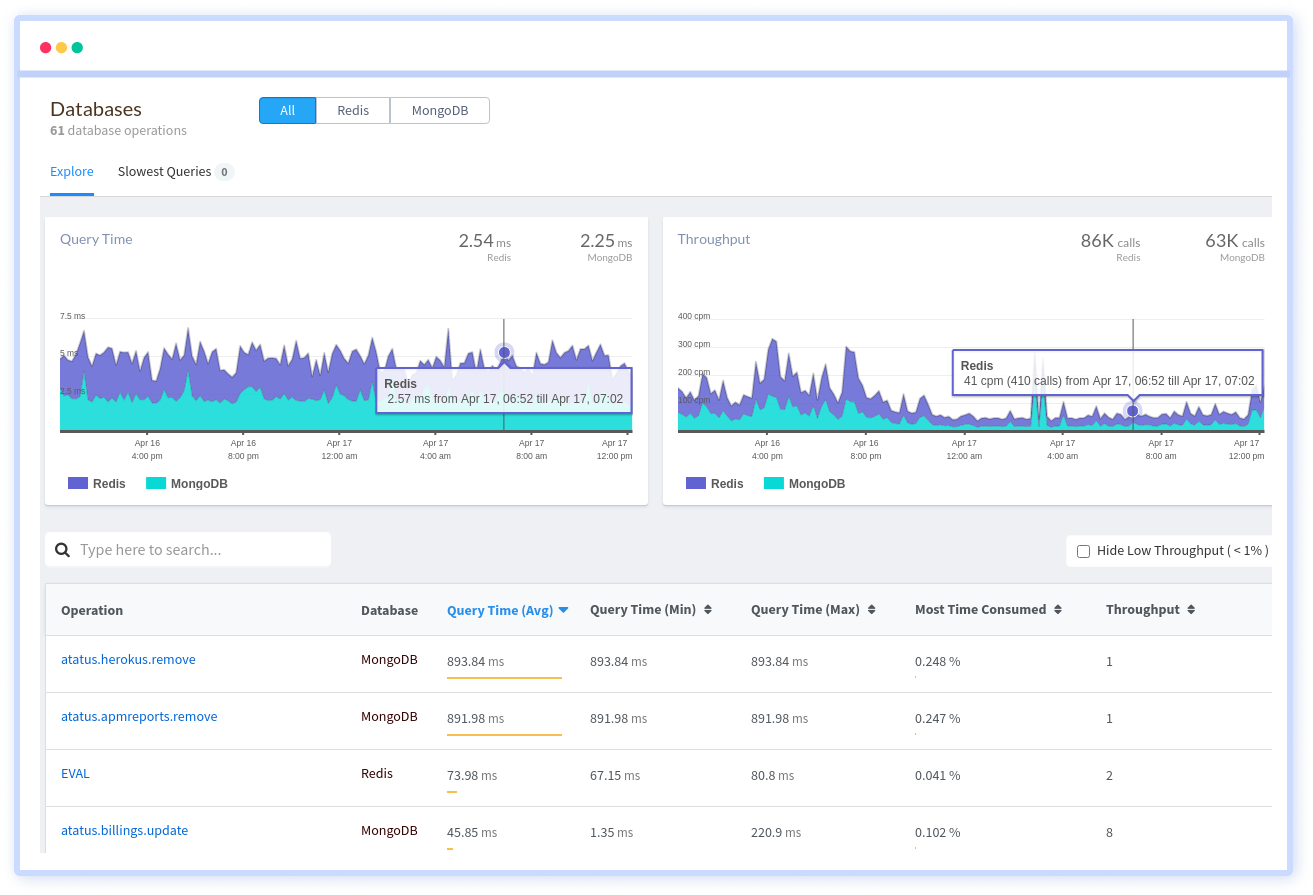
Atatus benefit your business, providing a comprehensive view of your application, including how it works, where performance bottlenecks exist, which users are most impacted, and which errors break your code for your frontend, backend, and infrastructure.
#1 Solution for Logs, Traces & Metrics
APM
Kubernetes
Logs
Synthetics
RUM
Serverless
Security
More

